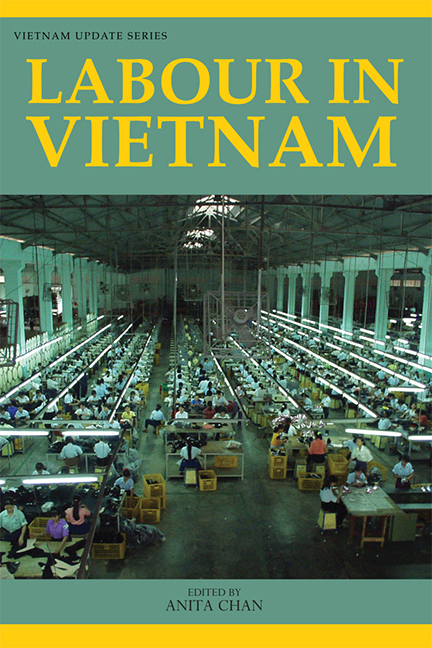Book contents
- Frontmatter
- Contents
- List of Tables and Figures
- Abbreviations
- Acknowledgements
- The Contributors
- 1 Introduction
- 2 “Awakening the Conscience of the Masses”: The Vietnamese Confederation of Labour 1947–75
- 3 State Enterprise Workers: “Masters” or “Commodities”?
- 4 The Redivision of Labour in a Red River Delta Village in a Globalized Economy
- 5 Corporate Social Responsibility in Socialist Vietnam: Implementation, Challenges, and Local Solutions
- 6 Workers' Protests in Contemporary Vietnam
- 7 Strikes in Vietnam and China in Taiwanese-owned Factories: Diverging Industrial Relations Patterns
- 8 The Dynamics of a Multinational Factory Regime and Recent Strikes in Vietnam
- 9 How Does Enterprise Ownership Matter? Labour Conditions in Fashion and Footwear Factories in Southern Vietnam
- 10 Exploitative Recruitment Processes and Working Conditions of Vietnamese Migrant Workers in Taiwan
- Index
6 - Workers' Protests in Contemporary Vietnam
Published online by Cambridge University Press: 21 October 2015
- Frontmatter
- Contents
- List of Tables and Figures
- Abbreviations
- Acknowledgements
- The Contributors
- 1 Introduction
- 2 “Awakening the Conscience of the Masses”: The Vietnamese Confederation of Labour 1947–75
- 3 State Enterprise Workers: “Masters” or “Commodities”?
- 4 The Redivision of Labour in a Red River Delta Village in a Globalized Economy
- 5 Corporate Social Responsibility in Socialist Vietnam: Implementation, Challenges, and Local Solutions
- 6 Workers' Protests in Contemporary Vietnam
- 7 Strikes in Vietnam and China in Taiwanese-owned Factories: Diverging Industrial Relations Patterns
- 8 The Dynamics of a Multinational Factory Regime and Recent Strikes in Vietnam
- 9 How Does Enterprise Ownership Matter? Labour Conditions in Fashion and Footwear Factories in Southern Vietnam
- 10 Exploitative Recruitment Processes and Working Conditions of Vietnamese Migrant Workers in Taiwan
- Index
Summary
Since the mid-1990s public protests in Vietnam have been increasing compared to the 1976–1995 period. Particularly numerous have been demonstrations by peasants and workers. This article examines protests by urban workers in private and state-owned factories and other types of workplaces.
Most of these workers' public protests have taken the form of strikes, the primary focus of my analysis. I address two sets of questions. One set concerns the protests themselves. What are workers pressing for, and why? What happens during strikes? Where do they occur, and are they peaceful, disruptive, or violent? How are they organized? And how do they occur, given that thus far they have all been illegal? The other set of questions concerns the consequences of these protests. What are the outcomes? What happens to the workers involved? How do employers respond? What are the reactions of state authorities, including those in the official labour confederation, and what do those reactions reveal about Vietnam's political system?
Although labour protests in contemporary Vietnam are my main concern, I compare them, insofar as available sources allow, to similar phenomena in the southern part of Vietnam (then the Republic of Vietnam [RVN]) during 1954–75, prior to the country's reunification. Because many of the strikes today occur in the southern half of Vietnam, a comparison between current and past protests reveals some differences between labour protests today and those of some fifty years earlier. Another goal of this study is to compare the forms and consequences of labour unrest in the two political settings — the anticommunist, semi-democratic/semi-authoritarian RVN that together with the United States was fighting internal wars, and the current, largely authoritarian, Communist Party-governed Socialist Republic of Vietnam (SRV). The analysis shows some similarities in what workers sought and the consequences of their protests. The contrasts, however, are more remarkable and help to highlight the significance of today's labour unrest for the present political system.
- Type
- Chapter
- Information
- Labour in Vietnam , pp. 160 - 210Publisher: ISEAS–Yusof Ishak InstitutePrint publication year: 2011

